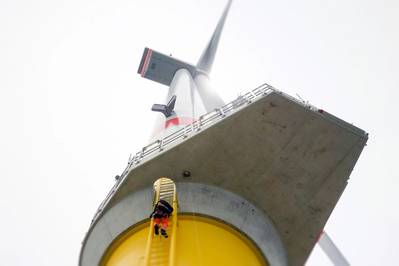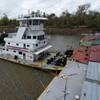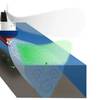Offshore Emergencies: Every Minute Counts
When an offshore wind farm or remote marine operation has an emergency medical situation that requires the extraction of an injured employee, every minute counts. Getting the injured employee from the point of injury to a hospital requires quick action. This process can be more complicated if the injury occurs in a difficult to access area like a wind turbine.
Different situations determine how long it takes to extract an injured employee
If the injured employee is mobile and medics can move them to the helideck on an installation, then extraction is simple. If they are in the nacelle, the part of the turbine that houses components, it can take up to an hour to get them to a point where extraction can occur.
To ensure that employees can be safely and quickly extracted, companies should form a strong partnership with a workplace health and safety provider that offers a comprehensive list of services including medical extractions or evacuations. The medical partner should provide medics trained in extraction with rope rescue qualifications and supported them with the proper specialist medical kits. And, they should demonstrate that their team can stabilize the patient on-site before safely overseeing the extraction and evacuation of the patient to a hospital.
A workplace health and safety provider that provides a full range of medical services is able to:
- Offer suggestions on the preparation of first aid and emergency medical services.
- Provide health education and promotion.
- Utilize topside support to receive world-class medical advice and resources from actively practicing, board-certified emergency and specialist physicians at any location in the world, at any time.
- Recommend comprehensive rehabilitation services after illness or injury.
Identify and address workplace hazards
Employees operating in remote marine locations are subject to additional risks and medical challenges. Therefore identifying and addressing workplace hazards can go a long way in preventing incidents as can monitoring and reviewing the workforce’s health on a regular basis.
These are all good reasons for integrating occupational health into health and safety management strategies. A comprehensive provider’s health surveillance from a medic supported by a panel of topside doctor specialists is an ideal set up. These medics should be able to provide:
- Medical screenings to confirm employees are fit to work with pre-employment, pre-deployment, and post-deployment exams and health assessments.
- Online and on-site training courses such as wilderness first aid, wilderness first responder, remote EMT, and advanced medical training and certification.
- On-site physical therapy from trained medics and therapists who intervene early on-site can eliminate injuries and reduce worker’s comp claims while keeping employees healthy and productive.
In addition, experienced EMTs and medical staff can assess the risks to employees’ health and safety and the impact their work activity has on these risks. This includes assessing scenarios where extraction may have to take place.
Remember, because of the challenging conditions of marine environments, every minute counts. The medical resources available can make a big difference in achieving desirable results.
Planning for and responding to medical emergencies
In an environment where every minute counts, a full medical emergency response plan (MERP) is essential. Emergencies can arise when least expected. For example, an employee can be injured during a routine exercise, resulting in potentially life-threatening injuries. A MERP helps ensure that medics use the correct procedures to enable all emergencies to be dealt with efficiently. It’s critical to plan to protect the health and safety of the personnel who work on projects as the demand for a company’s products and services grows. An experienced partner can help develop an effective MERP and provide guidance and training exercises to ensure that rescue services work when minutes matter.
Taking precautions and planning for quick action in emergencies will ensure medics are able to make every minute count in an emergency. It’s the optimal way to minimize risk, protect workers, save lives, and improve operational efficiency.














